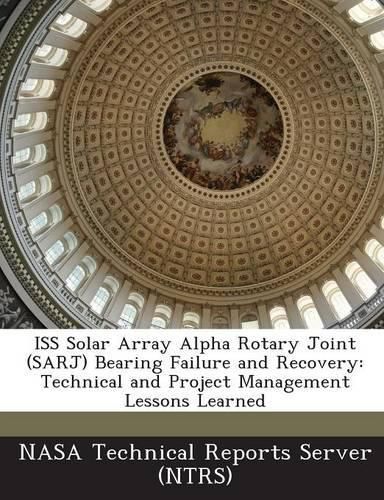Readings Newsletter
Become a Readings Member to make your shopping experience even easier.
Sign in or sign up for free!
You’re not far away from qualifying for FREE standard shipping within Australia
You’ve qualified for FREE standard shipping within Australia
The cart is loading…






The photovoltaic solar panels on the International Space Station (ISS) track the Sun through continuous rotating motion enabled by large bearings on the main truss called solar array alpha rotary joints (SARJs). In late 2007, shortly after installation, the starboard SARJ had become hard to turn and had to be shut down after exceeding drive current safety limits. The port SARJ, of the same design, had been working well for over 2 years. An exhaustive failure investigation ensued that included multiple extravehicular activities to collect information and samples for engineering forensics, detailed structural and thermal analyses, and a careful review of the build records. The ultimate root cause was determined to be kinematic design vulnerability coupled with inadequate lubrication, and manufacturing flaws; this was corroborated through ground tests, metallurgical studies, and modeling. A highly successful recovery plan was developed and implemented that included replacing worn and damaged components in orbit and applying space-compatible grease to improve lubrication. Beyond the technical aspects, however, lie several key programmatic lessons learned. These lessons, such as running ground tests to intentional failure to experimentally verify failure modes, are reviewed and discussed so they can be applied to future projects to avoid such problems.
$9.00 standard shipping within Australia
FREE standard shipping within Australia for orders over $100.00
Express & International shipping calculated at checkout
The photovoltaic solar panels on the International Space Station (ISS) track the Sun through continuous rotating motion enabled by large bearings on the main truss called solar array alpha rotary joints (SARJs). In late 2007, shortly after installation, the starboard SARJ had become hard to turn and had to be shut down after exceeding drive current safety limits. The port SARJ, of the same design, had been working well for over 2 years. An exhaustive failure investigation ensued that included multiple extravehicular activities to collect information and samples for engineering forensics, detailed structural and thermal analyses, and a careful review of the build records. The ultimate root cause was determined to be kinematic design vulnerability coupled with inadequate lubrication, and manufacturing flaws; this was corroborated through ground tests, metallurgical studies, and modeling. A highly successful recovery plan was developed and implemented that included replacing worn and damaged components in orbit and applying space-compatible grease to improve lubrication. Beyond the technical aspects, however, lie several key programmatic lessons learned. These lessons, such as running ground tests to intentional failure to experimentally verify failure modes, are reviewed and discussed so they can be applied to future projects to avoid such problems.